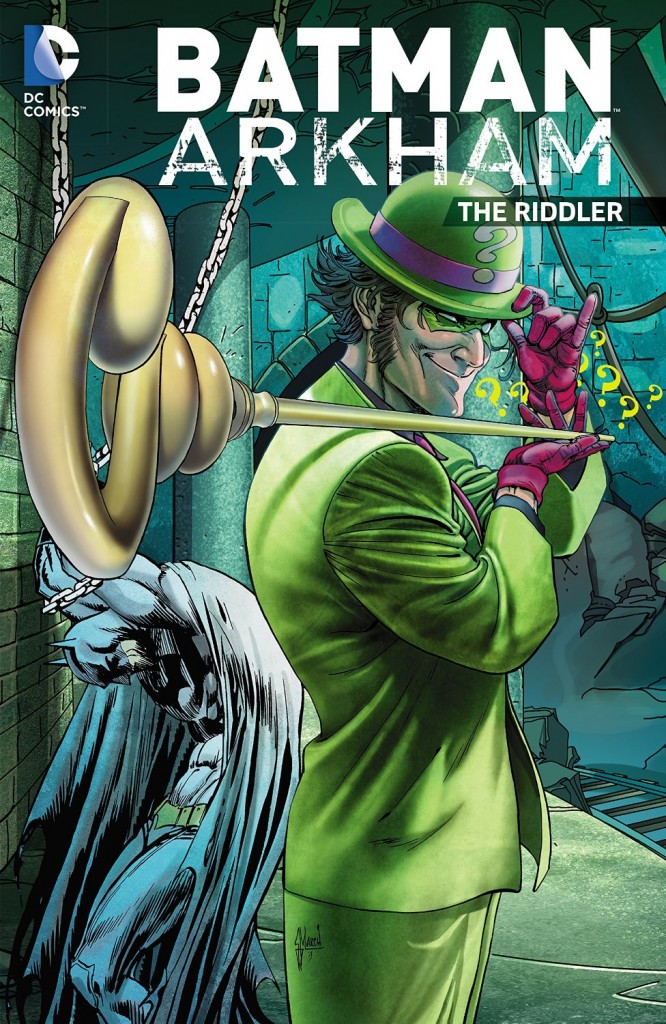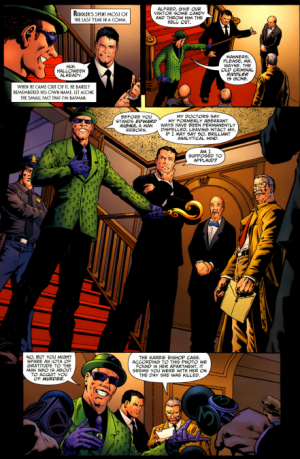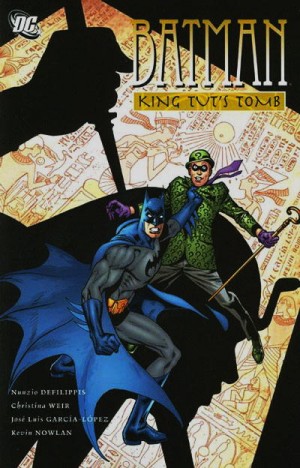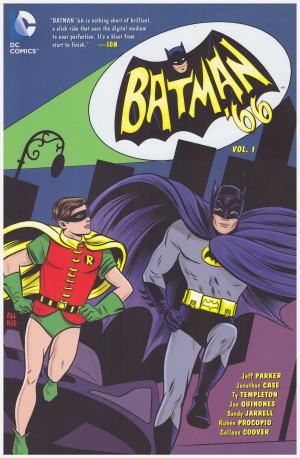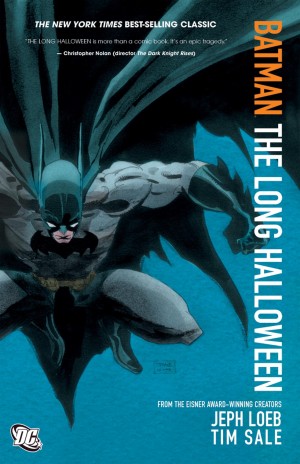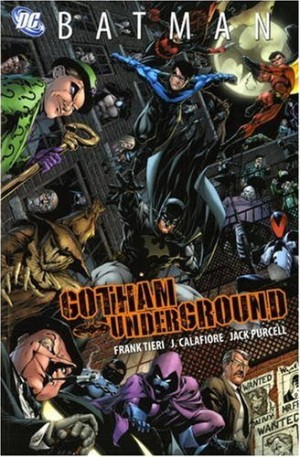Review by Ian Keogh
Of all the foes most associated with Batman the Riddler has been the most difficult to pull into the 21st century. In fact, as superhero stories have acquired a greater sophistication in terms of personality and motivation, this is a conundrum that first raised its head in the 1980s. This anthology illustrates the problem, with a chronological gap between 1983 and 2006.
When the Riddler was introduced in 1948, Batman stories were plot-based with trickery, mystery and suspense the priorities, and Bill Finger’s creation of a villain who left riddle-based clues to his forthcoming crimes was an astute addition to Batman’s cast. Young readers, and there were few others in 1948, could match wits with Batman as he attempted to solve the Riddler’s clues. His introduction ends with a great visual motif of a question mark from his costume floating on the sea. It’s also interesting to note that this proto-Riddler, given a rapid return, is illustrated by Dick Sprang with the pointed chin later associated with the Joker.
He didn’t catch on in the 1940s, however, and it was as an obscurity revived for the 1960s Batman TV show that led to his next comic appearances in the mid-1960s. While introducing the Riddler’s compulsion to leave clues, they’re otherwise very much in the style of the TV show, one that the stiffness of Gardner Fox and Sheldon Moldoff is at odds with, although Frank Springer captures the spirit.
Don Kraar’s 1982 strip introduces the concept that formed the modern era Riddler, that of the detective on a par with Batman, but it’s otherwise predictable. It’s not until the halfway point and stories since 2006 that there’s anything that holds up as other than nostalgia, although Don Newton’s art is nice and under-rated. Presumably because it doesn’t feature Batman, a notable encounter between the Question and the Riddler is absent, so it’s Paul Dini and Don Kramer, another under-rated artist (see sample page), who cement the Riddler as a detective in a logically-based re-boot. This is in a pair of engaging tales that both keep the reader guessing and ensure Batman’s not upstaged.
Peter Calloway’s script about the Riddler in love is cleverly narrated by the Joker, who doesn’t lay everything out and ends on a puzzle. Calloway treads a fine line, but the Joker’s narrative mood swings work for the story rather than against it, and Andres Guinaldo’s art is good. By the final two stories the Riddler’s back to his criminal ways. Scott Snyder and Ray Fawkes combine for the plot, so there’s no individual credit for the challenging riddles. They update the Riddler’s techniques to encompass 21st century details such as flash mobs and key fobs, but being prepared for every unpredictable eventuality undermines matters. So does Jeremy Haun’s art, which tells the story without a shred of emotion to the facial expressions.
The most recent story is from 2014, and again there’s a clever element to it, but reaching that requires wading through a lot of familiar territory in Charles Soule’s script. Nice art from Dennis Calero, though.
That this anthology exists, albeit as part of a series concentrating on Batman’s foes prompts the question of how many Riddler fans there are, and whether they’re enough to make this publication break even. It’s a riddle in itself, but the answer probably lies in library sales.
Just in case you’re a Jim Aparo fan, he’s among only five named contributors on the back cover, but his only pages inside are two cover reproductions.
